We had some fog yesterday morning so we had to wait a bit for it to clear before going out on the water. When the fog did clear, we had some beautiful weather and were able to spend some time with a right whale mother and her calf not far from home. As the day went on, the wind slacked off and conditions got nicer and nicer. We made an attempt to attach an acoustic tag, but when we were unsuccessful we backed off and put some hydrophones in the water to record from a distance instead. While the hydrophones were listening, we were watching, taking pictures, video, and writing down behaviors the old fashioned way: with paper and pencil.
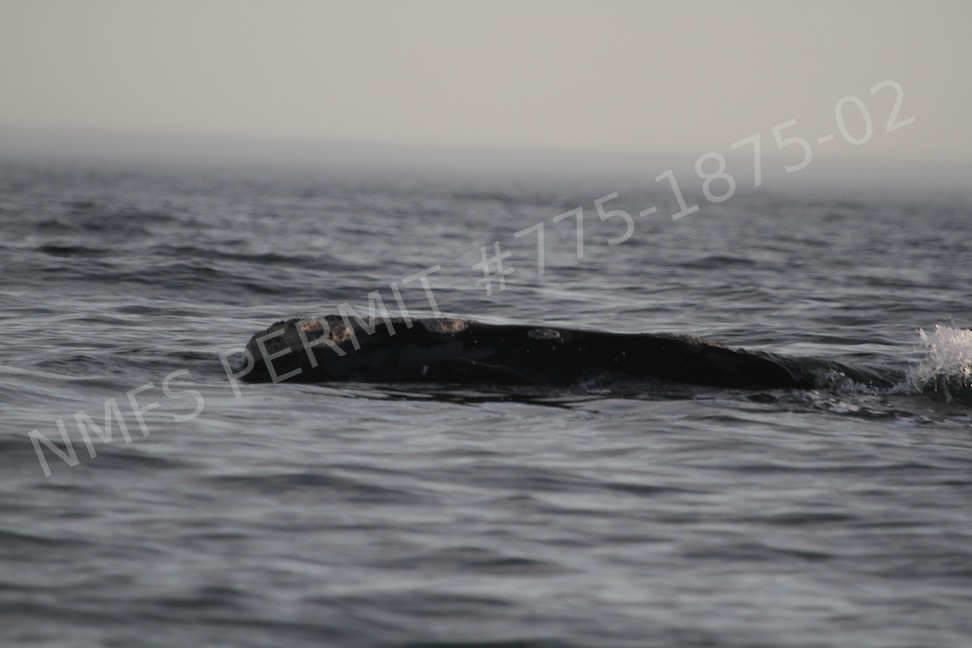
We were treated to a peculiar sight if you’ve never seen it before: the belly of the whale. The mother rolled over while we were watching and Pete snapped a good shot. While right whales are mostly dark all over, some individuals have white bellies. Others have white chins and actually, this mother has both. You can see her upside down chin toward the left part of the photo.

Early in our trip we caught a glimpse of a Manx Shearwater (Puffinus puffinus). Manx are on the smaller side for shearwaters, visibly smaller at sea than the Great Shearwater (Puffinus gravis). Manx are also distinguishable by their jet black coloring above, and white below. They also beat their wings noticeably faster than a Great Shearwater. Below, you can see those wings have a high aspect ratio, that is: they are long and skinny. This type of wing is taken to the extreme in a bird like an albatross. When there isn’t a lot of wind, these birds have a lot of flapping to do to take off, but once they get going they are quite fast. On a windy day, shearwaters have little use for flapping, instead they turn into the wind to gain some altitude and then zoom downwards scaling the tops of waves and surfing down the other side in the troughs. They even occasionally drag a wing tip over the surface of the water, displaying their near perfect control.
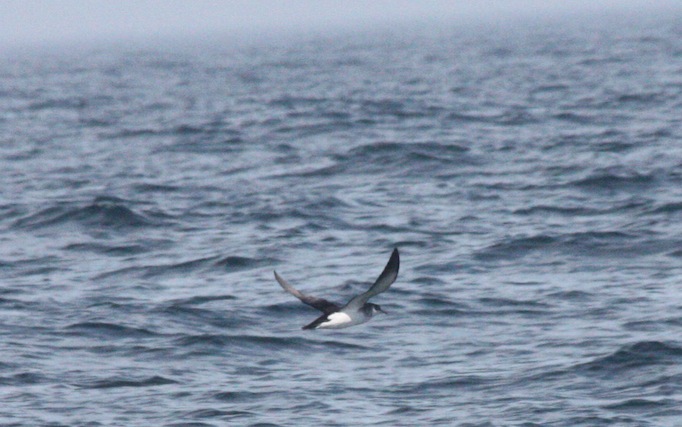
As graceful as they are on the wing, shearwaters are also good swimmers. While they don’t dive from as great heights as the Northern Gannet (see last blog post), they do make underwater forays in search of small schooling fish. You can see some Cory’s Shearwaters (Calonectris diomedea) doing just that in this excellent BBC footage.
Manx shearwaters have a very long migration route which crosses the equator. Many Manx breed in the UK [1], but some breed in the Western North Atlantic as well. Manx cover a lot of ocean as they migrate from their colonies to various feeding grounds up and down the eastern seaboard of North and South America, as well as the west coast of Africa and Europe [1,2]. Manx are also known to be impressively long lived in at least one case. An adult was caught and “ringed” (a small tag put around one of the legs) on May 17th 1957 on Bardsey Island, Wales. On May 5th 2008, just shy of 51 years later the same bird was caught and noted by a ringer on the very same island. Think of how many thousands of miles this bird might have flown over its life in between stops in Wales! You can see this and other records for UK birds here.
Not everything that flies over the water is a bird. Nathan noticed this invertebrate on my shoulder at some point today. Dragonflies are strong fliers even over water, but it seems like this one was taking a small rest on the boat today. After taking a few photos for a positive id later, I moved it from my shoulder to another part of the boat so we didn’t have to worry about disturbing it. From time to time I checked and saw it stayed in the same spot for most of the day, but as we were coming back to port in Fernandina, it had already flown off on its way. Back at the house I took a quick look at bugguide.net and I believe this was an Harlquin Darner (Gomphaeschna furcillata). This is a rather small species of darner, but as you can see below, still a good sized dragonfly. You can also see it is a male, because it has long cerci at the tail end.

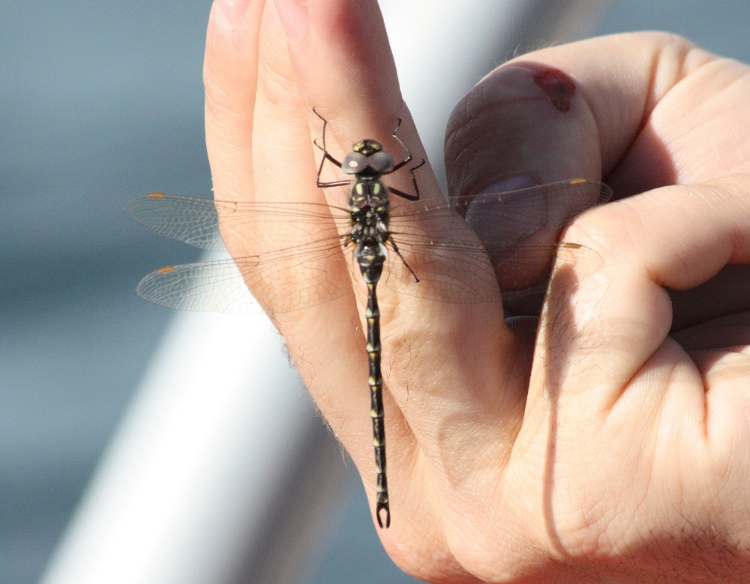
A larger species of darner, Anax junius, has even been tagged with a radio transmitter in order to track their movements [3]. The transmitter was only about 300mg! You can see below a researcher gluing a tiny radio tracker to a dragonfly. Fourteen dragonflies were tagged in this study for up to 14 days. These individuals undertook a new migration an average of every 3 days, moving an average of 58 kilometers over 6 days [3].
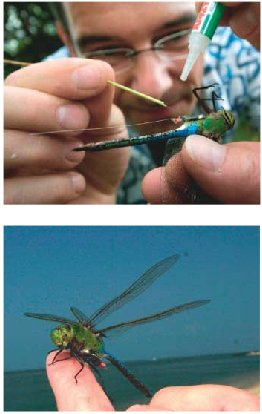
We actually use this same technology to keep track of the Acousonde acoustic tags once they are deployed on whales. Below you can see one of our radio transmitters with my hand for scale. The yellow tape is holding a magnet to the transmitter, which keeps it inactive for storage. To activate, all we have to do is remove the magnet and a switch turns on the transmitter.
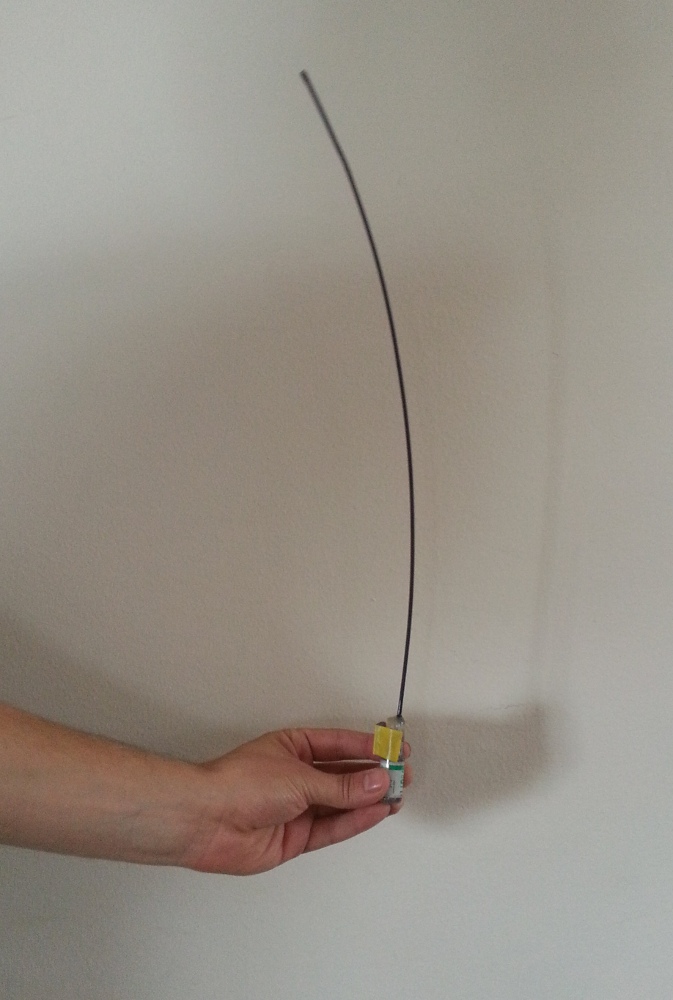
We see Bottle-nosed dolphins (Tursiops truncatus) almost every day and today was no exception. I didn’t happen to get any pictures of them today, but Dana got some great pictures a couple of weeks ago. At that time, some dolphins were actually swimming quite near some of the whales we were observing. Sometimes dolphins will swim right alongside and in front of larger baleen whales for long periods of time. Some dolphins will also travel in the pressure waves created by the wakes of boats. It has been suggested that this behavior around boats may give the dolphins an energetic benefit [4], but it isn’t entirely clear why they swim near baleen whales.
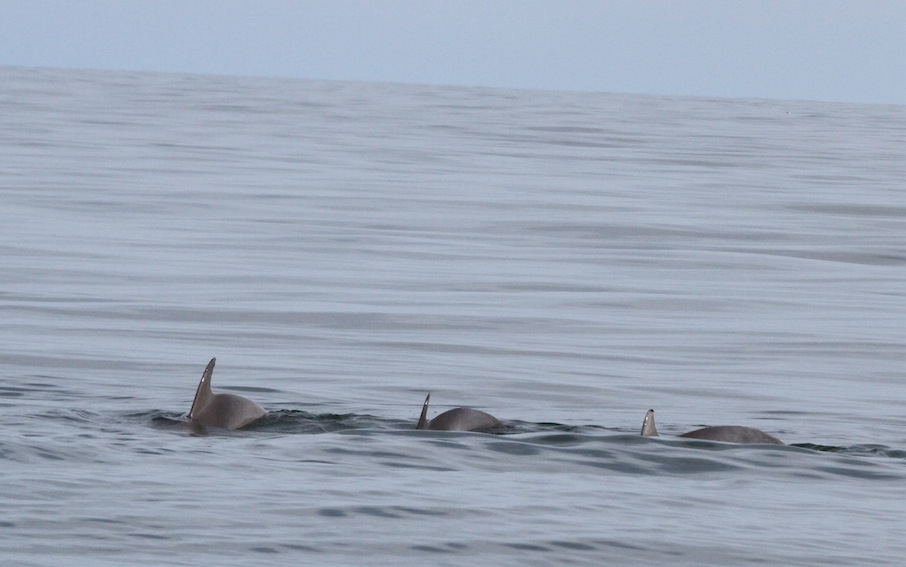
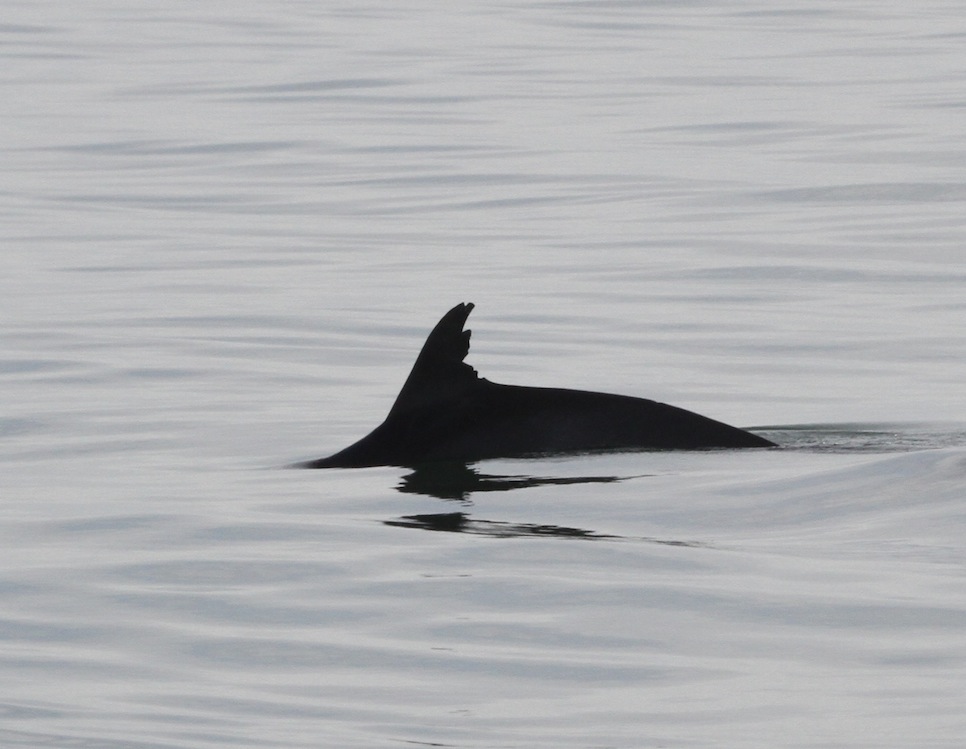

We noticed that one of the dolphins had something attached to the dorsal fin. There are a couple different animals that attach themselves to cetaceans. Jen Jakush from the Florida FIsh and Wildlife Conservation Commission suggested that it might be some Xenobalanus, a genus of barnacle that sometimes attaches to dolphins [6]. These barnacles are crustaceans and are related to the kind you might find on pylons down at the docks, but they do look quite a bit different. While you might think this species is parasitic, these barnacles are actually thought to be phoretic, or just along for the ride. Barnacles are suspension feeders, so they aren’t eating the dolphins skin, but rather plankton they find in the water column as the dolphin carries them from place to place.
All and all a successful day on the water with some great right whale sightings, which afford us a good opportunity for data collection. As always, there were plenty of other interesting sights as we transited to and from the whales. On our way home we were treated to a nice sunset over Fernandina Beach.

P.S. If you were disappointed in the quality of the pictures I took of the jaeger last time, here’s a better picture Pete snapped today. This bird flew by as we were taking data on the right whales.
[1] Freeman, R., Dean, B., Kirk, H., Leonard, K., Phillips, R. A., Perrins, C. M. & Guilford, T. 2013. Predictive ethoinformatics reveals the complex migratory behaviour of a pelagic seabird, the Manx Shearwater. Journal of The Royal Society Interface, 10(84), 20130279.
[2] Guilford, T., Meade, J., Willis, J., Phillips, R. A., Boyle, D., Roberts, S., Collett, M., Freeman, R. & Perrins, C. M. 2009. Migration and stopover in a small pelagic seabird, the Manx shearwater Puffinus puffinus: insights from machine learning. Proceedings of the Royal Society B: Biological Sciences, 276(1660), 1215–1223.
[3] Wikelski, M., Moskowitz, D., Adelman, J. S., Cochran, J., Wilcove, D. S., & May, M. L. 2006. Simple rules guide dragonfly migration. Biology Letters, 2, 325-329.
[4] Williams, T. M., Friedl, W. A., Fong, M. L., Yamada, R. M., Sedivy, P., & Haun, J. E. 1992. Travel at low energetic cost by swimming and wave-riding bottlenose dolphins. Nature, 355(6363), 821-823.
[5] Connor, R. C., Smolker, R. A., & Richards, A. F. 1992. Two levels of alliance formation among male bottlenose dolphins (Tursiops sp.). Proceedings of the National Academy of Sciences, 89(3), 987-990.
[6] Toth-Brown, J., Hohn, A. A. 2007. Occurrence of the barnacle, Xenobalanus globicipitis, on coastal Bottlenose Dolphins (Tursiops truncates) in New Jersey. Crustaceana 80 (10): 1271-1279
[7] BBC footage of swimming shearwaters
[8] Longevity records for Britain & Ireland
[9] Harlequin Darner (Gomphaeschna furcillata) at bugguide.net
[10] Acousonde website